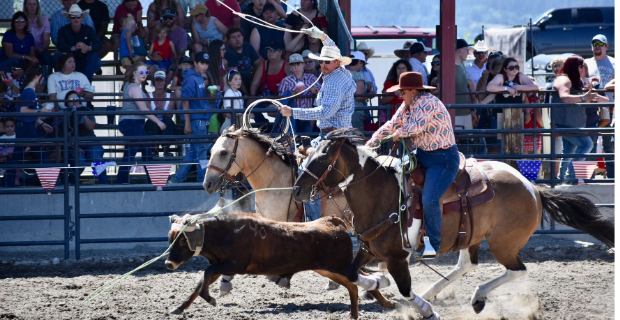Peaceful present belies a bloody past
Published 3:00 am Wednesday, March 29, 2023

- Battle Mountain Park is popular for family reunions and group gatherings centered around a granite fireplace built in the 1930s by the Civilian Conservation Corps, a Great Depression employment project.
For tree lovers, Battle Mountain Forest State Scenic Corridor is a place to revel in nature’s handiwork. The scenic corridor sits along U.S. 395 some 40 miles south of Pendleton and nine miles north of Ukiah. The drive is characterized by vast open spaces, spectacular vistas, remarkable rock formations and scarce traffic.
For history lovers, the name Battle Mountain brings to mind the decisive battle of the Bannock War. Troops under Gen. Oliver O. Howard fought Bannocks, Northern Paiutes and Snake Indians under Chief Egan, the American name for Pony Blanket, a Northern Paiute.
Howard, known to some as Old Prayer Book and to others as The Christian General, graduated from the United States Military Academy fourth in a class of 46. He lost his right arm in the Battle of Fair Oaks/Seven Pines.
Howard served in the Army until 1894. For achievements in the 1877 Nez Perce campaign, a mountain by Wallowa Lake was named in his honor. The Mount Howard tram, built in 1970, gained notoriety as the steepest vertical lift gondola in North America by rising from 4,450 feet above sea level to 8,150 feet.
Publicity was not all positive. Chief Joseph blamed Howard for causing war by rushing the Indians onto a smaller reservation without time to gather stock and make a dignified move.
Less is known about Egan. According to Access Genealogy, his mother and father were Cayuse Indians. As a young boy, he was among a party of Cayuse in a meadow gathering wild onions and other food when attacked by Indians from Snake country. The adult Cayuse were killed. The children were “adopted” by Snake and Northern Paiute families.
Raised by a Northern Paiute family, Egan gained recognition as a hunter and angler. He married the sister of Shenkah, a Paiute chief, and soon became a war chief, earning distinction battling hostile Indians and also settlers and soldiers under Gen. George “Grey Wolf” Crook.
Tiring of war, Egan and his small band of followers sought peace. They became farmers on the Malheur Indian Agency near present-day Burns on land given to them by Indian agent Sam Parish.
A change in Indian agents, however, stirred discontent and ultimately rebellion when Major William Vance Rinehart, a gold prospector and Indian fighter before becoming a merchant in Canyon City — said the land belonged to the government.
The Paiute returned to hunting and gathering. Later, upset their nomadic lifestyle was being usurped by white settlement, the band, joined by Bannock and Snake Indians, chose Egan as their reluctant leader and struck out against settlers and the U.S. Army.
The culminating battle took place July 8, 1878, in the foothills of Battle Mountain. The U.S. Army prevailed. Egan lost his life to Umapine, a Umatilla scout.
Now a peaceful setting, Battle Mountain Park is open for day use from April 22 to Oct. 15. The park is popular for family reunions and gatherings around a granite fireplace built in the 1930s by the Civilian Conservation Corps.
Visitors will see wildflowers in late spring and birds thrive here — watch for mountain and western bluebirds, mountain chickadees and pileated woodpeckers.
Their cheerful chattering, however, can’t totally drown out the sad echoes of history.









